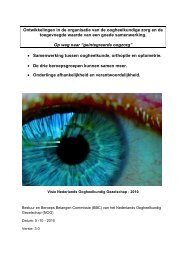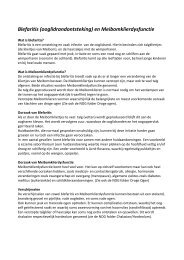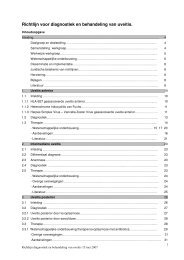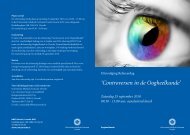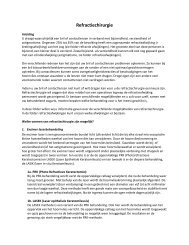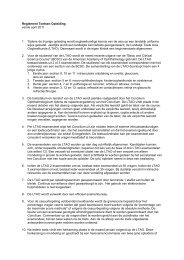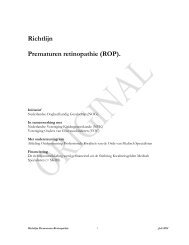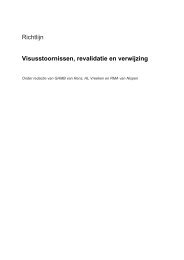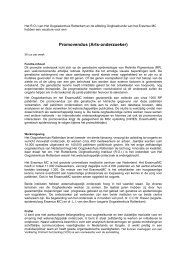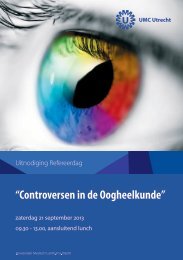terminology and guidelines for glaucoma ii - Kwaliteitskoepel
terminology and guidelines for glaucoma ii - Kwaliteitskoepel
terminology and guidelines for glaucoma ii - Kwaliteitskoepel
Create successful ePaper yourself
Turn your PDF publications into a flip-book with our unique Google optimized e-Paper software.
Results<br />
The outcomes of a number of r<strong>and</strong>omized prospective clinical trials should be taken into account when considering<br />
a patient`s suitability <strong>for</strong> laser trabeculoplasty 78-84 .<br />
Large independent clinical trials have shown progressive loss of effect over time 85-87 .<br />
Alternative laser systems <strong>for</strong> laser trabeculoplasty:<br />
Those found effective in reducing IOP in <strong>glaucoma</strong> include trabeculoplasty with continuous wave lasers of red <strong>and</strong><br />
infrared wavelengths 88 , <strong>and</strong>, recently, a large spot size, high power, low energy Q-switched, frequency doubled<br />
neodymium:YAG (532 nm) system 89 .<br />
3.5.3 - LASER IRIDOPLASTY 76<br />
Indication<br />
• To widen the angle approach by shrinking the peripheral iris using a thermal effect.<br />
• Plateau iris syndrome<br />
• In preparation <strong>for</strong> ALT when the angle approach is narrow, in order to better visualize the TM<br />
• Angle closure in nanophthalmos<br />
Preoperative preparation<br />
As <strong>for</strong> ALT<br />
Contraindications<br />
severe corneal edema or opacification<br />
flat anterior chamber<br />
synechial angle-closure<br />
Lenses<br />
Laser contact lenses<br />
Abraham lens<br />
Goldmann type lens, aiming through the central part, not the mirrors<br />
Laser parameters<br />
Contraction burns<br />
Spot Size: 300-500 mm<br />
Duration: 0.2-0.5 seconds<br />
Power: 200-400 mW<br />
Location: the aiming beam should be directed at the most peripheral portion of the iris<br />
Goal of treatment is contraction of the peripheral iris with flattening of the peripheral iris curvature.<br />
Ideal number of impacts: 20-50 applications over 360° leaving 2 beam diameters between each spot <strong>and</strong> avoiding<br />
visible radial vessels<br />
Complications:<br />
mild iritis<br />
corneal endothelial burns<br />
transient post-operative IOP elevation<br />
posterior synechiae of the pupil<br />
permanent pupil dilation<br />
Postoperative treatment:<br />
topical steroids <strong>for</strong> 4-7 days<br />
prevention of IOP spikes (see Ch. 3.6.2)<br />
Post-operative management<br />
Some as under 3.5.2<br />
Ch. 3 - 31 EGS



